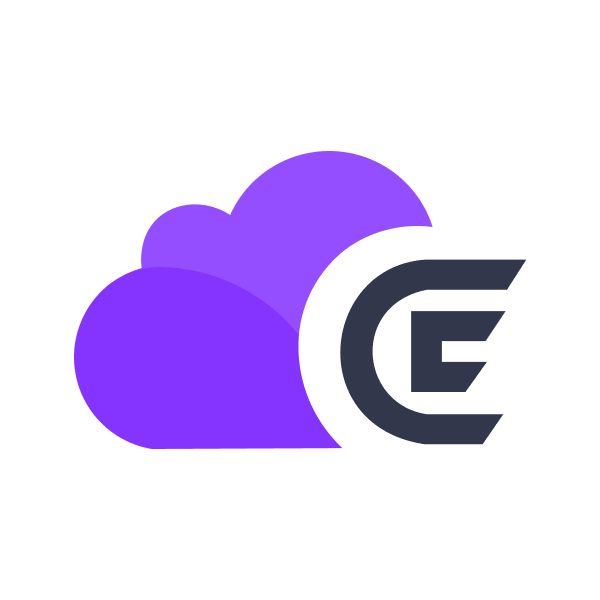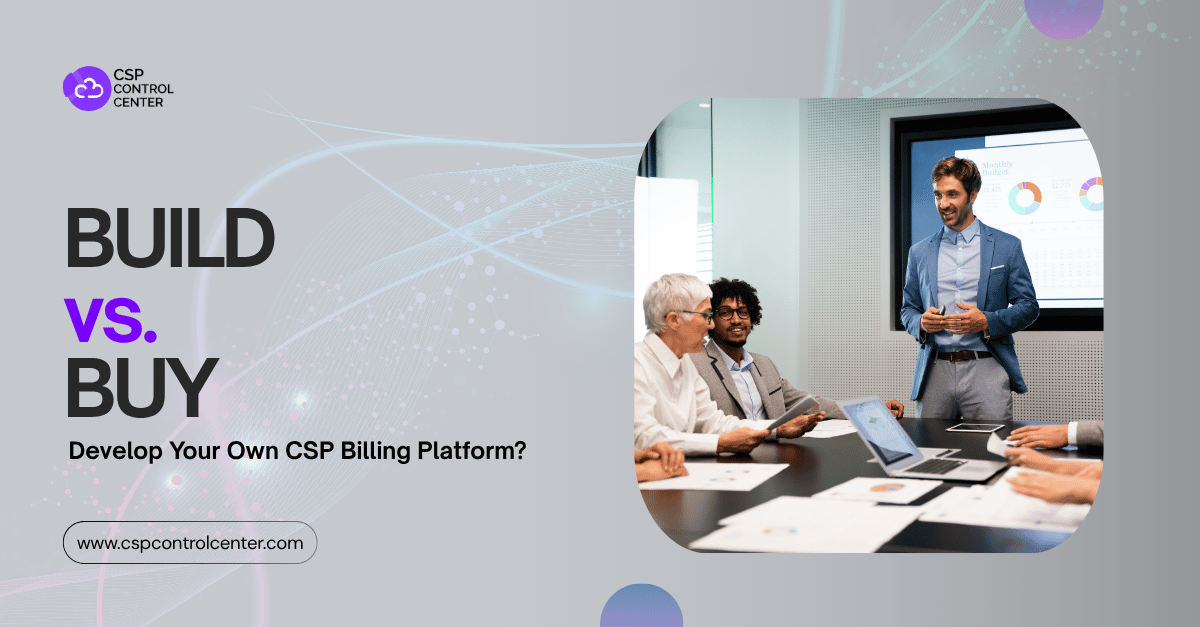With a rise in innovation and digital transformation, businesses are able to expand their reach and efficiency exponentially. Invariably, the digital world enables businesses to scale their operations at an unprecedented rate, especially with the proof of concept that came as a result of the unleashing of the pandemic. Here, automation has been one of the key drivers enabling organizations to push their boundaries and break free of limitations to scale aggressively and facilitate business growth. Automation can help organizations not only scale their growth, but also sustain the same to hold the competitive advantage in the longer run.
Moving from a macro to a micro approach, automation holds unparalleled potential for Cloud Service Provider (CSP) businesses. With automation, CSPs businesses can seamlessly scale their operations as well as customer reach. Put simply, automation can help improve business efficiency and at the same time serve more customers in a more effective manner. Through the course of this paper, we will understand the factors that limit scalable growth for CSP businesses, explore the needs and benefits of automation and help create a roadmap to leverage automation for business scalability.
Limits to CSP business scale
Let’s start the discussion by decoding the limitations or challenges which come in the way of scaling CSP businesses. To be able to scale their business CSPs need to be able to serve customers globally as well as ensure efficient and effective operations across all verticals. However, there are certain challenges that decelerate this journey of scale, including:
Limited skilled talent
To be able to effectively function and meet the expectations of an ever-growing customer base, CSPs need to have skilled talent with the right competencies and attributes. Invariably, as the number of customers increases, there is a consequent increase in the need for human resources to acquire, retain and serve the customers. However, there are three challenges along the way:
- CSP businesses on their journey to scale may not have adequate resources to hire the best industry talent at a mass level.
- Finding the right talent to attain operation efficiency and customer success can be a challenge in itself.
- CSP businesses fortunate enough to find the right talent also have to wait the general gestation period of 3-6 months to allow the new hire to start delivering productivity.
Thus, the inability to hire high quality talent to scale operations and reach is the first major challenge to business scalability.
Inefficient processes
Most CSPs that find scaling their business a challenge suffers from inefficiency in the way their team and the organization as a whole works. For instance, CSP businesses often rely on large spreadsheets for invoicing and other requirements. Scaling this is next to impossible and is likely to be replete with inefficiencies and errors if it does take place. A manual approach to repetitive tasks stands in the way of scale with limited room for growth due to vulnerability to human error and slower pace of work.
Need for automation to scale CSP business
Keeping in mind the limitations mentioned below which make scaling a CSP business challenging, we move to the next section. This part of our research paper seeks to explore how automation holds the key to scaling CSP businesses. There are four major tenets which create a business case for automation and the best bet for CSPs to scale their businesses:
Serve larger customer base
Automation can enable CSPs to serve a much larger customer base. When employees are freed of the many repetitive and administrative tasks, they have the potential to serve more customers. Here, teams can solely focus on acquiring, retaining and servicing customers with value add, rather than ensuring that they receive invoices on time and other administrative work. With a lot of free time in hand, employees can innovate new ways to serve a larger customer base leveraging customer data, market insights. Invariably, automation can help ensure an exponential growth in the number of customers served seamlessly.
Eliminate inefficiency and revenue leakage
Business scale can only be achieved when inefficiencies are eliminated, especially the ones which lead to revenue leakage. From a CSP lens, manual invoicing is vulnerable to errors and inaccuracies, while taking a lot of bandwidth and time. These inefficiencies can result in underbilling of customers and even cause customer frustration. However, with automation, CSPs can shed such worries and apprehensions with accurate, error free and reliable processes.
Improve customer experience
In addition to automating manual processes, automation has the potential to offer new and improved functionalities for the customers. For CSP customers, this majorly comes in the form of self-service. Automation can enable customers to manage their subscriptions and requests on their own. This adds to a better customer experience with a feeling of empowerment. Therefore, with automation, CSPs can create an enriching experience at scale, without increasing their human resources or even stretching their budget too much.
Reduce administrative overload
Administrative overload is one of main reasons why CSP businesses find it hard to scale. While working manually, team members have to prepare invoices over spreadsheets, constantly communicate with partner centers for usage reconciliation and much more. However, when these tasks which are repetitive and do not require human intervention are automated, team members have the bandwidth and mindspace to contribute meaningfully. This enables employees to focus their creative energy towards devising strategy to create empowering experiences at scale and innovating along the way to deliver maximum impact. Invariably, automation can help reduce administrative overload and facilitate business scalability.
Steps to leverage automation to scale CSP business
Understanding the need and benefits of automation to scale CSP business, let’s now move to a stepwise approach to achieving the same. Working with CSP partners for years now and based on the latest industry trends and market research, we have come up with four major steps to create a roadmap for CSP automation. It is important to focus on each of these steps and achieve unparalleled business growth:
List the processes that need to be automated at priority
It is important to create a list of priority processes. While it is true that the ultimate goal may be to automate every process of the CSP business, it is important to start with a few which are of utmost importance. Starting automation of all processes at once can be overwhelming and might lead to compromised impact. Therefore, start with making a list of all processes, but focus on identifying those that are on top of the priority funnel and require immediate action. From a CSP standpoint, following are the few processes that should be prioritized:
Usage reconciliation
The first process here is the conciliation of usage. In the absence of automation, CSPs generally rely on partner centers to send data and information of subscription and usage by customers, which then becomes the basis for invoicing. However, this can result in unnecessary delays in the revenue and payments cycle. Automating usage conciliation will enable CSPs to immediately calculate the usage for the billing period with complete accuracy and eliminate the reliance on others as well as prevent the challenges of guess work and approximation. Furthermore, automation also empowers CSPs to calculate license-based purchases as well as other usage, even if the service is used from the middle of a month. This highlights the high level of efficacy that automation brings along to ensure precise usage conciliation.
Invoice creation
Based on the usage conciliation, automation can help CSPs create error free and reliable invoices within a few minutes. Under the manual course, employees rely on large spreadsheets to bill clients and create invoices. This manual process is vulnerable to human error, is time inefficient and may lead to revenue leakage in case of inaccurate billing. On the flip side, automated itemized invoicing ensures that all invoices that reach customers are correct and take into account licenses under use along with all usage across all accounts. Furthermore, it automatically incorporates all discounts and custom pricing for each customer, eliminating the need to have separate records and formulae for different customers. Therefore, automation in invoice creation helps ensure that invoices are not only reliable and accurate, but also take into consideration various factors that might affect the final billing amount. Ultimately, error free invoicing leads to an empowering customer experience and automation can help significantly scale the same.
Payment timelines
Another process that must be on the top of the list for automation for a CSP is the payment timeline and collection. Most customer organizations have a monthly billing timeline when they clear all their partner payments. Manual invoice processing can sometimes stretch these timelines, leading to either payment delays or customer dissatisfaction. The need to automate this process comes from the fact that it can help ensure that the correct invoices reach the customers on predefined dates, without any delay, every month. Furthermore, under manual payment and invoicing, customers might receive multiple invoices in case they upgrade their number of licenses or change their usage mid-month. This can not only be a business, but an administrative nightmare too. Automation ensures that the customer receives a single integrated invoice with pro rata billing on the date of their convenience. Automating payment timelines can ensure scaling up the entire collection process in the scale up journey.
Pricing changes
Automation for CSPs finds a clear use case in managing pricing changes. Conventionally, when the pricing policy for Microsoft changes, employees for a CSP business have to manually update those changes for each account to ensure that customers are billed at the right prices. However, this is vulnerable to human error of missing a change or not factoring in custom pricing, etc. With automation, CSPs can leave behind the worry of such updates as they are automatically taken into consideration. The automation platform is pre-programmed to update the pricing change in real time and ensure alignment with ongoing discounts of custom pricing for different customers.
Customer control
Finally, customer experience and control should be on the automation priority list. With automation, CSPs can empower customers to control their own accounts and add, change, or edit subscriptions and usage plans based on their convenience. Invariably, automation enables customers to keep control of their accounts and also frees CSP team members from the mundane work of accepting change requests. Thus, with this form of automation, CSPs can seamlessly address customer requests at scale making customer service for a large base possible.
Envision the automation Strategy
Once the list of processes on top of the priority for automation are ready, it is important to envision and create a strategy to transform the idea into reality. Here are a few steps that can help you create an effective strategy:
Craft an automation vision
Start with crafting a vision for your automation journey. This refers to envisioning what you seek to achieve from automation. It could be better customer experience, greater administrative efficiency, achieving better results, etc. Undoubtedly, the ultimate vision or goal for automation for CSPs will be scaling their business to reach the next level. However, it is equally important to envision the milestone which will help reach the goal of scalability.
Identify the right automation platform
As a part of your automation strategy, once the vision is ready, it is important to identify the partner to spearhead the journey. For CSPs, an automation partner like C3 can be very effective. Make sure that the automation platform you select not only offers state of the art technology capabilities and ecosystem, but also a comprehensive and robust customer support to take the friction out. Additionally, gauge how long the entire automation process is likely to take, For instance, with C3, CSPs can be up and running with their automation solution within a week.
Set the expectations and get started
With the vision and partner in place, the next part of the strategy is to set the expectations and get started. The idea here is to illustrate what automation entails and how it will create an impact across the organization. This is important to help everyone on the team understand how automation will change the way they work and help the CSP business scale. For instance, employees must be made aware that automation will help them break free from working on multiple and large spreadsheets and enable them to serve customers at scale. Once the expectations are set, it is time to plan out the process movement and move to the next step of the automation journey to scale.
Plan out the process movement to silos free automation track
Based on the priority list of processes for automation and a robust strategy, the next step for CSP business automation is to plan out how the automation process as a whole will take place. It is important to understand that automation cannot occur in silos and all teams must come together to plan out a phased approach towards automation. The ultimate aim of automation is to create an integrated experience for all teams to work in collaboration and together scale the operations and customer reach. In a phase wise manner, CSPs can implement the automation strategy based on priority list created and take a step-by-step approach to automation
Review the benefits of process automation and plan next
Finally, once the automation strategy has been implemented, it is time to review and improve. Start with gauging the benefits of automation and align them with the vision set in the beginning. Measure how well automation has been able to impact the various goals for scaling including creating a better customer experience, serving a much wider customer base, exponentially accelerating the pace of administrative tasks and removing inefficiencies from the same. Once you feel that the major pain points for your CSP business limiting the potential to scale have been addressed with automation, plan the next phase to automate other parts which will incrementally add to CSP business scalability.
Scale your CSP business with automation powered by C3
As mentioned during the course of this paper, having the right automation partner is integral to scale up success for CSP businesses. As the preferred partner for CSP businesses across the globe, C3 is revolutionizing the way CSP business is managed, enabling our partners to scale exponentially. With C3, cloud partners can seamlessly automate and streamline all business processes across customer servicing, billing and invoicing, administrative workflow etc. C3 can help you scale your business by:
- Automating itemized invoicing for each customer and everything you sell
- Creating a shop & cart experience for partners and end customers
- Enabling CSPs to define offers pricing and sell your value-add services
- Updating Microsoft pricing with bi-directional sync
- Facilitating extensive reporting available across multiple parameters
- Updating changes to subscriptions and customer usage to ensure nothing gets missed
That’s not all. CSP businesses can leverage the power of our extensive product & technology ecosystem to grow faster and scale at an unprecedented pace. With an intuitive interface, unmatched features, and ease of use, C3 has all it takes for CSP to reach and sustain the next level of their growth journey. Book a demo today and join the bandwagon to accelerate your journey to leverage automation for scale.

 CSP Control Center
CSP Control Center
 CloudEvents
CloudEvents


